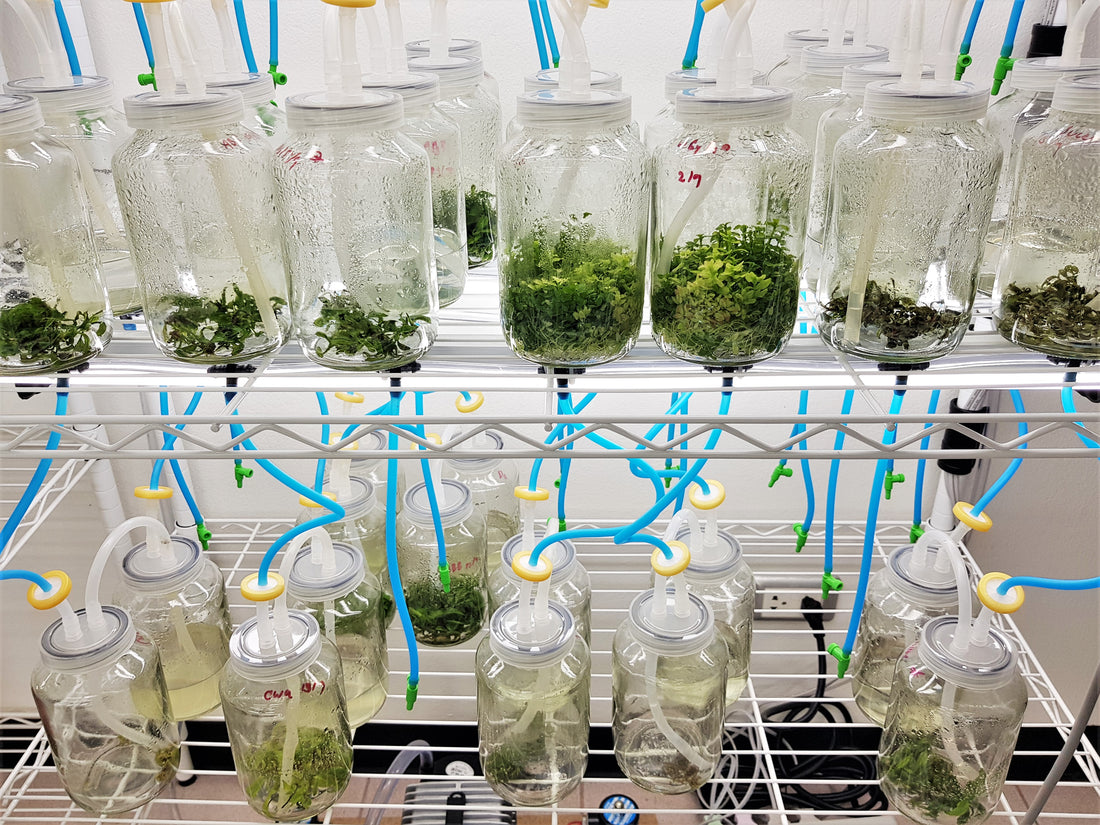
DIY Temporary Immersion Bioreactor
As a content and community manager, I leverage my expertise in plant biotechnology, passion for tissue culture, and writing skills to create compelling articles, simplifying intricate scientific concepts, and address your inquiries. As a dedicated science communicator, I strive to spark curiosity and foster a love for science in my audience.


Introduction
Despite providing several advantages, propagation of plants on a commercial scale using tissue culture technique is always criticized for its costly procedures, whether its operation, maintenance, labor cost, or area cost.
Extensive research is required to bring down the operation or overhead cost by introducing equipment or systems that are cheap but effective.
One way to achieve this is by the use of a large volume and high-yield culture system with liquid media to facilitate handling. And, the use of bioreactors has been an efficient way to ease the scaling-up and low production costs.
Bioreactors are a self-contained, sterile environment whose basic function is to provide optimum growth conditions by regulating various chemical and/or physical factors. Currently, several types of bioreactors are available including air lift-bioreactor, stirred tank bioreactor, rotating drum bioreactor, and column bioreactor.
In these bioreactors, plants are present in completely submerged conditions, which limits the proper gas exchange between plants. Thus, it causes vitrification or hyperhydricity of plant tissues. Its symptoms include chlorophyll deficiency, cell hyperhydricity, hypolignification, reduced deposition of epicuticular waxes, and changes in enzymatic activity and protein synthesis.
The best alternative to the problem is the use of a membrane raft system, nutrient mist bioreactor, or temporary immersion bioreactor (TIB).
In this article, you will learn about temporary immersion bioreactors—what they are, how they function, and their advantage over other bioreactor systems. And, that’s not it, you will also learn to design your own TIB at a much affordable price.
What is a Temporary Immersion Bioreactor?
Temporary immersion bioreactor is simply defined as the immersion of the entire culture into culture media for a short period of time. This bioreactor consists of two systems that include two physically separated vessels or a single system containing partitions between its upper and lower part.
TIB involves two phases of wetting and drying. First, the air is pumped into the vessel containing culture media, which pushes the media into the other vessel containing cultured explants. After a short period of time, another pump supplies air into the explant-containing media, which pushes the media back into the media-containing vessel and allows the cultures to dry up. And, this cycle is repeated during the whole process.
The most advanced temporary immersion bioreactors are RITA and BioMINT bioreactors. The BioMINT bioreactor is a medium-sized modular bioreactor in which the movement of the liquid medium from one vessel to the other is passively driven by gravity. It doesn’t require a connection to pumps or air compressors. It’s used for all stages of the micropropagation process, from induction to in vitro weaning, of many species.
Advantages of Temporary immersion Bioreactor (TIB)
The advantages of TIB includes:
- It protects plants from any physiological disorders, like vitrification. The immersion of explants for 5-10 minutes every 3-6 hours (depending on the plant species) avoids hyperhydricity and maintains plants in healthy conditions.
- It’s easier to control the frequency of culture immersion using a temporary immersion bioreactor, which provides better control over maintaining the growth and development of plants.
- A thin film of liquid forms after the media supply causes the improvement of the entire culture in the system by allowing proper gas exchange.
- The cultures are protected from contamination due to the presence of specialized air vents.
- The plants are protected from any mechanical stress due to the lack of agitation in the system, which is higher in the other bioreactors.
Designing a Temporary Immersion Bioreactor
The principal component of a temporary immersion bioreactor is as same as other bioreactors, like those in airlift or bubble column-type bioreactors. But, it requires a fixed or floating raft support system inside the culture vessel to support the explants. It has two tanks, a culture vessel, and a media storage tank that is usually located at the bottom of the culture vessel or in a separate bottle in case of a twin bottle system.
The entire process is controlled by a solenoid valve and the process or media is controlled by two air pumps.
Figure: Design and process of temporary immersion bioreactor.
Source: F. Afreen (2008)
Design Your Own Temporary Immersion Bioreactor
Plant Cell technology has created a video on designing your own temporary immersion bioreactor at a much affordable cost.
Watch the attached video and follow the procedure in a step-wise manner. And, for your convenience, all the materials used in the video are listed here.
Requirements:
Cambro RFS6PP190 Camwear 6-Quart Round Food Storage Container with Lid, 2 hose barb connectors, Silicone Hose Washer Gasket, metal washer, silicon tubes, air pump, digital power supplier, solenoid (¼ inch), Multifunctional Infinite Cycle Programmable Plug-in Digital Timer Switch, cable with plug, electrical tape, soldering iron, and adaptors.
If you design your own bioreactor watching our video, do share the pictures with us and we will be happy to share them with our community of culturists.
Happy Culturing!!

Source: Giphy
References
- Afreen, F. (n.d.). Temporary Immersion Bioreactor. Focus on Biotechnology, 187–201. doi:10.1007/978-1-4020-3694-1_11
- Robert, M. L., Herrera-Herrera, J. L., Herrera-Herrera, G., Herrera-Alamillo, M. Á., & Fuentes-Carrillo, P. (n.d.). A New Temporary Immersion Bioreactor System for Micropropagation. Plant Cell Culture Protocols, 121–130. doi:10.1385/1-59259-959-1:121.
- https://www.plantcelltechnology.com/blog/temporary-immersion-bioreactors/
- https://www.youtube.com/watch?v=g6gUQ3IHj4Q
Blog Categories
View by Level
Popular Blogs

6 Plant Tissue Culture Books to Keep Learning
Introduction Most of us are fans of books when it comes to learning a topic in detail and in a...
Read More
New Technical Agar Vs Supreme Agar
Introduction What’s the secret element that supports and holds plants in vitro? Not sure? It’s the solidifying agent. Solidifying agents...
Read MoreSubscribe to Our Newsletter







Join the conversation
Your email address will not be published. Required fields are marked